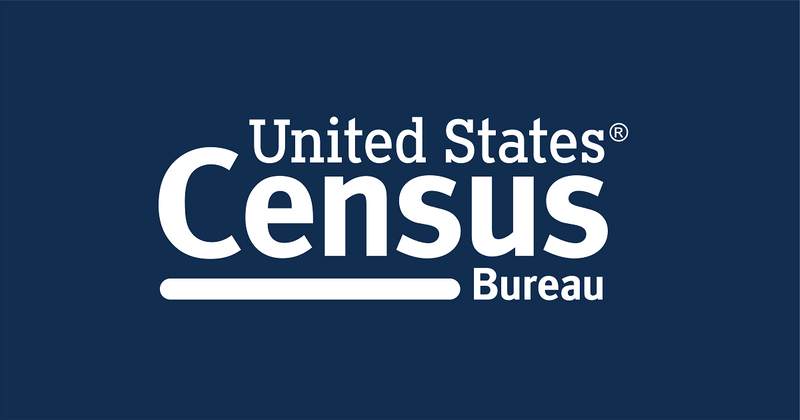Emerging tech
Cutting-edge technologies can improve the delivery of public services
The federal government monitors new technologies, especially those with great potential to change how the public lives and works. Adopting new technologies responsibly can improve the efficiency and quality of government services.
Related Policy
Executive Order on the Safe, Secure, and Trustworthy Development and Use of Artificial Intelligence

Emerging tech: Essential knowledge
-
Administration Actions on AI
Find updates on the federal government’s work to promote the safe, secure, and trustworthy use of AI. This includes federal agency use cases, the Blueprint for an AI Bill of Rights and an AI risk management framework.
-
Understanding robotic process automation
Explore how automated technologies can optimize the quality and efficiency of your program services.
-
Inclusivity and automation: How a bot can help you stay accountable
Learn how automation can support the development of inclusive language.
-
Assessing the state of federal robotic process automation
Learn about the maturity and impact of processing and automation tools across the government.
Emerging tech events
Change the Way Digital Work Gets Done
USWDS Monthly Call - March 2022
Artificial Intelligence for Homeland Security: Developing the Strategy
Emerging tech news
10 years of the U.S. Digital Service: Transforming government for the digital age
Over the past decade, the U.S. Digital Service (USDS) has collaborated with more than 30 federal agencies to create user-friendly, reliable, and seamless digital experiences. Their work prioritizing human-centered design and engineering includes improving services for veterans with Veterans Affairs, launching the Internal Revenue Service Direct File Pilot, and supporting the Centers for Disease Control and Prevention during the COVID-19 pandemic. Looking ahead, USDS remains committed to building trust, fostering innovation, and scaling digital capacity across the federal government, ensuring better service for all Americans.— via The White House

Back to basics in the age of AI
The federal government is actively discussing the transformative potential of artificial intelligence (AI). It has the potential to transform our digital service delivery, automate tasks, and enhance data analysis. However, AI also presents challenges and risks such as bias and ethical concerns. The team at 18F provides a quick overview of AI, its place in government today, and the techniques and frameworks they are currently using to navigate this complex new landscape.— via 18F

Why some technologists choose public service
The General Services Administration (GSA) employs nearly 12,000 people who provide services to federal agencies and the public, and has been recognized as one of the top federal agencies to work for, emphasizing a people-first culture. Through the Tech to Gov initiative, GSA’s Technology Transformation Services (TTS) has successfully recruited top tech talent to enhance digital government services. Get to know some of GSA’s newest technologists.— via General Services Administration

In 2023, TTS stepped up to meet growing technology demands for government
GSA’s Technology Transformation Services (TTS) celebrated major milestones and met growing demand for its services in 2023. This wrap-up summaries key successes in five areas: improving customer experience, modernizing federal technology, innovating for the future, focus on equity and accessibility, and building the technology workforce of tomorrow.— via General Services Administration

An Accidental AI Professional
This feature on Agata Ciesielski, a fellow in the White House Presidential Innovation Fellowship (PIF) Program, highlights the opportunities provided by the program to work on big impact inter-agency problems, such as elevating artificial intelligence solutions.
Resources on Emerging tech
-
Administration Actions on AI
Steps to promote the safe, secure, and trustworthy use of AI. Includes: progress reports, federal agency use cases, and voluntary private sector commitments, as well as the Blueprint for an AI Bill of Rights, NIST AI Risk Management Framework, National AI R&D Strategic Plan, and National AI Research Resource (NAIRR) Pilot.
-
Executive Order on the Safe, Secure, and Trustworthy Development and Use of Artificial Intelligence
Establishes new standards for AI safety and security, protects Americans’ privacy, advances equity and civil rights, stands up for consumers and workers, promotes innovation and competition, advances American leadership around the world, and more.
-
FACT SHEET: President Biden Issues Executive Order on Safe, Secure, and Trustworthy Artificial Intelligence
Summarizes the eight sections of the Executive Order: New Standards for AI Safety and Security; Protecting Americans’ Privacy; Advancing Equity and Civil Rights; Standing Up for Consumers, Patients, and Students; Supporting Workers; Promoting Innovation and Competition; Advancing American Leadership Abroad; and Ensuring Responsible and Effective Government Use of AI.
-
Blueprint for an AI Bill of rights
From the White House Office of Science and Technology Policy (OSTP), the Blueprint for an AI Bill of Rights is a set of five principles and associated practices to help guide the design, use, and deployment of automated systems to protect the rights of the American public in the age of artificial intelligence.
More News and Events on Emerging tech
272 posts
10 years of the U.S. Digital Service: Transforming government for the digital age
Over the past decade, the U.S. Digital Service (USDS) has collaborated with more than 30 federal agencies to create user-friendly, reliable, and seamless digital experiences. Their work prioritizing human-centered design and engineering includes improving services for veterans with Veterans Affairs, launching the Internal Revenue Service Direct File Pilot, and supporting the Centers for Disease Control and Prevention during the COVID-19 pandemic. Looking ahead, USDS remains committed to building trust, fostering innovation, and scaling digital capacity across the federal government, ensuring better service for all Americans.— via The White House

Back to basics in the age of AI
The federal government is actively discussing the transformative potential of artificial intelligence (AI). It has the potential to transform our digital service delivery, automate tasks, and enhance data analysis. However, AI also presents challenges and risks such as bias and ethical concerns. The team at 18F provides a quick overview of AI, its place in government today, and the techniques and frameworks they are currently using to navigate this complex new landscape.— via 18F

Why some technologists choose public service
The General Services Administration (GSA) employs nearly 12,000 people who provide services to federal agencies and the public, and has been recognized as one of the top federal agencies to work for, emphasizing a people-first culture. Through the Tech to Gov initiative, GSA’s Technology Transformation Services (TTS) has successfully recruited top tech talent to enhance digital government services. Get to know some of GSA’s newest technologists.— via General Services Administration

In 2023, TTS stepped up to meet growing technology demands for government
GSA’s Technology Transformation Services (TTS) celebrated major milestones and met growing demand for its services in 2023. This wrap-up summaries key successes in five areas: improving customer experience, modernizing federal technology, innovating for the future, focus on equity and accessibility, and building the technology workforce of tomorrow.— via General Services Administration

USWDS Monthly Call - August 2022
An Accidental AI Professional
This feature on Agata Ciesielski, a fellow in the White House Presidential Innovation Fellowship (PIF) Program, highlights the opportunities provided by the program to work on big impact inter-agency problems, such as elevating artificial intelligence solutions.
10x Announces 25 New Projects Launching This Fiscal Year
Starting with a pool of nearly 200 ideas, 10x is excited to announce new projects to be funded at the Phase One Investigation level for FY22. Here’s how we got there, some observations made, and next steps.
Change the Way Digital Work Gets Done
USWDS Monthly Call - March 2022
Assessing the State of Federal Robotic Process Automation (RPA)
The 2021 State of Federal Robotic Process Automation (RPA) Report describes the growth and maturity of federal RPA programs to convey agency progress in digital transformation and automation.
Prioritizing Equity in Government-Led Innovation Programs
For the second year, college and university students are leveraging the TOP model from Census to build hands-on skills and address some of our nation’s most pressing challenges.
5 Tips for Implementing Citizen Development in Your RPA Program
The Robotic Process Automation (RPA) Community of Practice highlights five key points for implementing RPA citizen developers, as shared by federal subject matter experts James Gregory (General Services Administration), Frank Wood (Defense Logistics Agency), and Russ Kuehn (Social Security Administration) during their recent webinars with the Federal RPA Community of Practice.
GSA Future Focus: Web Scraping
GSA Future Focus: Web Scraping—Often referred to as screen scraping, web harvesting, or web crawling, web scraping is a process that extracts unstructured data and text from web pages, and converts it into a form that can be easily analyzed. Learn how GSA’s Emerging Tech team has identified some best practices to help agencies use this technology responsibly and effectively.— via General Services Administration

Deep Fakes and Social Media: A Q&A With Alex Cohen
The questions in this post were curated from attendees of the Deep Fakes and Social Media Webinar, hosted by the SocialGov Community of Practice and Digital.gov on May 18, 2021.
3 Things You Should Know About the Federal RPA Use Case Inventory
The Federal Robotic Process Automation (RPA) Community of Practice is updating the RPA Use Case Inventory, which provides detailed information on over 300 RPA Use Cases across the federal government.
Artificial Intelligence for Homeland Security: Developing the Strategy
State of Federal RPA Report: Adoption and Impact of Robotic Process Automation in the Federal Government
The report describes the maturity and growth of RPA programs to convey agency progress in digital transformation and automation.
Overview of NIST Initiatives on Artificial Intelligence Standards, Principles, and Critical AI Issues
Transform Federal Business Operations: Join the RPA Community of Practice
Federal employees interested in robotic process automation should join the RPA Community of Practice as their agencies commence their RPA programs.















